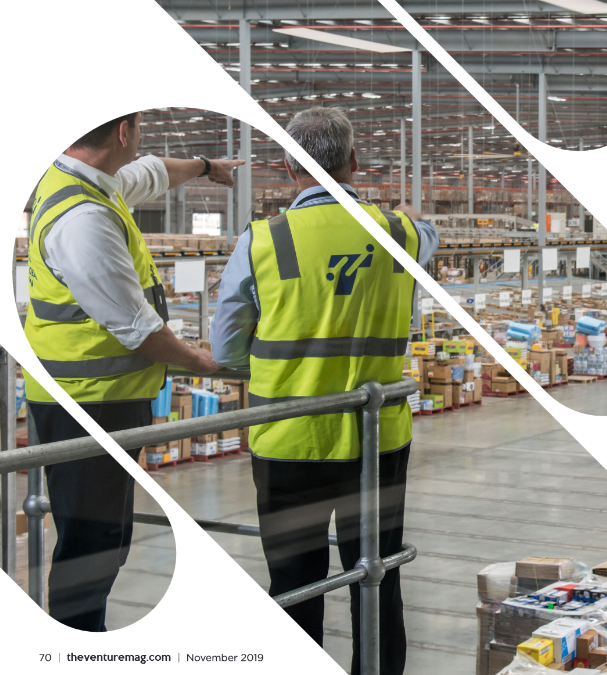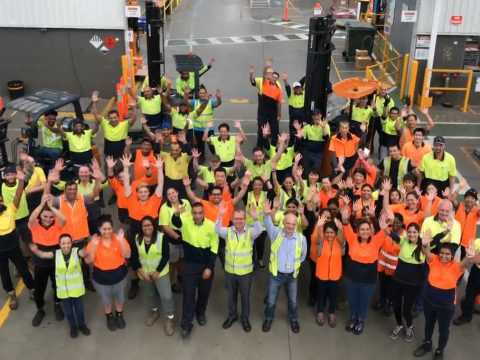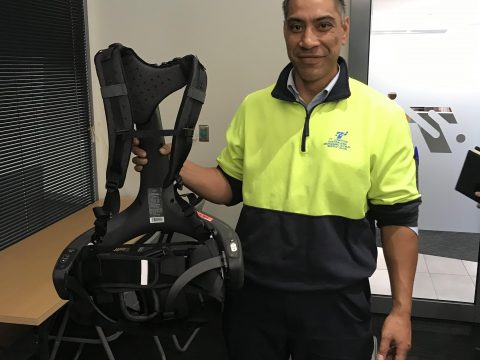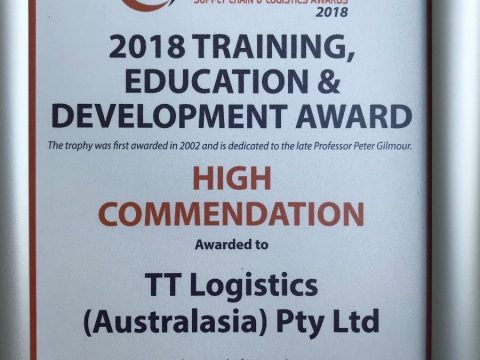
Our 10th Anniversary
February 5, 2019Continuous
Improvement
It’s what we all want, and what TT Logistics delivers
It’s a saying TT Logistics general manager for business development & commercial operations Patrick Ingenegeren borrowed from a mate. It’s another way of framing the principle of TPS (Toyota Production System), which is all about continuous improvement and eliminating waste from the processes that are in place throughout their operations. As a wholly owned subsidiary of Toyota Tsusho Australasia, an affiliate of the Toyota Tsusho Corporation, TT Logistics embraces change as fundamental to its 3PL contract logistics services.
Toyota Tsusho has broad global supply chain experience in supporting a major automotive original equipment manufacturer in Toyota Motor Corporation. Though TT Logistics business has gone from 99 per cent focused on TMCA (Toyota Motor Corporation Australia) at its 2008 founding to less than 10 per cent today, nevertheless the Toyota Production System (TPS) is very much an integral part of the company’s DNA. So whilst TT Logistics has branched out to 3PL contract logistics services from point of origin to last mile delivery for retail, fast-moving consumer goods, cosmetics, electronics, dairy, and more, the TT Logistics way remains. In its broadest sense it’s a variation on the traditional TPS house of lean manufacturing principles.

“Kaizen comes from Japanese ‘kai’ = change and ‘zen’ = good, which basically means change for the better, and at TT Logistics this is done every day. Some improvements are small, others are significant,” Patrick Ingenegeren told VENTURE. “Kaizen outcomes result in one or more of three things: direct cost saving, safety improvement, or customer service improvement.”
As a 3PL warehousing specialist company, they are in the business of solving contract logistics challenges in various supply chains; so that’s a great attitude for TT Logistics to take, and one that significantly benefits its customers as well as the organisation itself.
“Sometimes an investment is required to get the desired outcome of the kaizen, and recently we spent approximately $50,000 to improve the outbound flow of one of our main customers,” Patrick Ingenegeren said. “This kaizen resulted in an immediate reduction of required staff (cost saving), ergonomic improvement (safety), man and machine separation (safety), and processed more orders per day (customer service).”
Whilst this can result in an immediate reduction in revenue, it saved the customer a good chunk of money whilst fostering the relationship, which will pay dividends in the future. “We are paid back in loyalty,” he said, “and then when the contract is due for renewal they likely to re-sign with us again, and stay with us. These are important things that you need to do.”

People, Processes, Culture
As Patrick Ingenegeren likes to say, TT Logistics doesn’t just provide a forklift and a warehouse. Anyone can do that. What TTL provides is “people, processes, and culture.” It’s something that sets TT Logistics apart from their competitors and gives customers another reason to work with TT Logistics even if they aren’t the biggest 3PL in Australia.
“A lot of companies stick with their current provider because that’s what they know,” Patrick Ingenegeren said. “They often think that only a larger and well-known service provider in the market can do the job. But we are fairly unknown in the industry, and that’s unfortunate, but that’s also a strength because unknown may not be unloved. TT Logistics works with several well-known high-end quality brands that are more than happy to work with us, and their feedback on experience is far better with us compared to the usual suspects in the market, the big companies that provide a similar service. So I say, if you are in the market for a 3PL … the market actually offers good and sometimes better alternatives; service that’s innovative, not so common and standard, with us for example.”
The flexibility TT Logistics have allows them to stimulate change easily where larger, monolithic organisations may not be able to. As Patrick Ingenegeren put it, companies that look for quality, cost reductions, and continuous improvement going forward look more often toward companies like TT Logistics rather than just the big players in the market.

The TT Logistics Way
The TT Logistics Way is a defined set of standards and values by which TTL operate, essentially it is company culture. These standards and values can be applied to all team members, casual employees and management within the organisation. “I want to hear people say, ‘That’s not the TT Logistics Way!’ when facing a situation that doesn’t meet our standards,” Patrick Ingenegeren said.
“The purpose of this mindset is to align every person within the organisation to a standard way of operating to ensure that we maintain our high level of safety and quality within all parts of the business.
Being a Toyota family company, the TT Logistics Way was born out of the fundamental principles of TPS and the Toyota Way. It was decided that whilst we knew what our culture was, it was realised that through a recent growth period it was likely the essence of our culture could be lost. So we as leadership made the decision to write down our core standards, values, and culture and create the ‘TT Logistics Way 2019’. Training material would then be developed and provided to all parts of the business to empower our staff.”
TT Logistics adapted TPS house puts safety at the top, with highest quality, lowest cost, and best service just below. Under that are the pillars of quality and respect. Quality includes fulfilling service agreements — meeting quotas and key performance indicators — and the concept of “stop, call, wait.”
“In terms of stop, call, wait, if there’s an issue … you call your manager, you wait until he arrives, and you sort it out,” Patrick Ingenegeren said. “Where people work mistakes are made and if something goes wrong, some people just rectify it themselves, which is unlikely at TT Logistics but unfortunately it has happened in the past. If you do that, and don’t follow these rules, then something simple could actually become far more serious and potentially injure someone. Why we have this in place is because we need to understand why it happened and how we can avoid it from happening again, which of course is root cause analysis.”

This in turn leads to kaizen that make the warehouse more mistake-proof.
The respect pillar encompasses visual management, skill matrix, and genchi genbutsu. “Visual management could be a notice board in the operations showing where we are and what we’ve done that day.” Patrick Ingenegeren said. “Also if someone is trained to operate certain MHE (material handling equipment) and does certain activities, a skill matrix will show who is trained for what within the operation. It’s a very visual way to get all the names on the board from top to bottom from and left to right you basically see their skills, what is ticked, what is crossed, exactly who has gaps, and who is crossed trained with someone else if they need help.”
Genchi genbutsu — literally, “real location, real thing” — “means if there is an issue, you go to the place where we can see what’s happening and understand the limitations that they may have. If you don’t go and see, you don’t actually know what’s going on, so we do a lot of gemba walks, which is basically to walk through the operation and keep our eyes peeled for anything that could be a concern or can be improved. Management does a lot of safety walks, we do walks for kaizen, plus we speak daily to our staff in the operation to hear firsthand how things are going.”
It all leads to a foundation of planning, standardised work, and kaizen ultimately resulting in stability as the bedrock. The TT Logistics way empowers employees to excel in their job and there are plenty opportunities on offer within the business to further advance in their career. This is one small factor within our culture that led to a 95 per cent retention rate among permanent staff.
Putting customers and employees first; that sounds like best in class to us.




